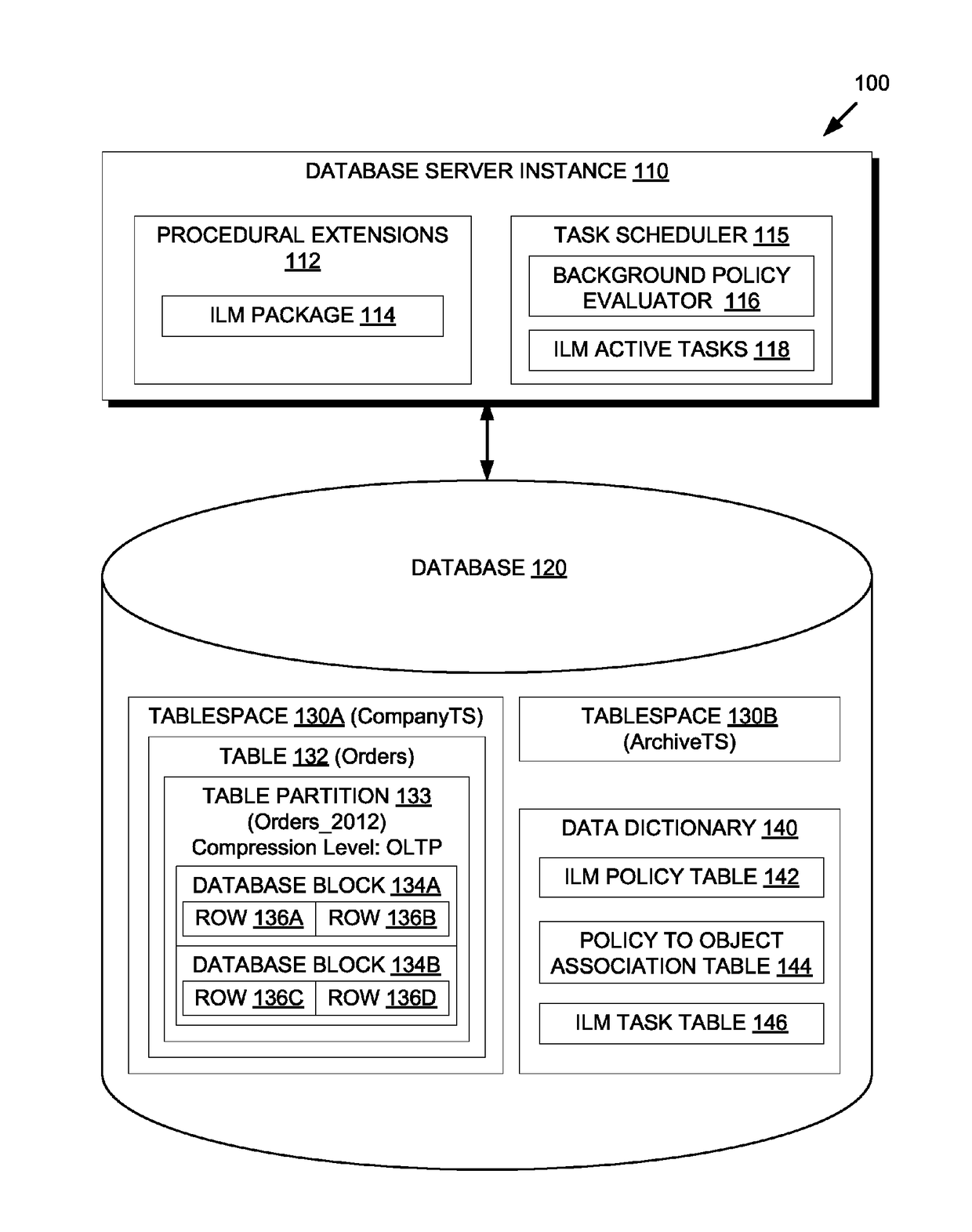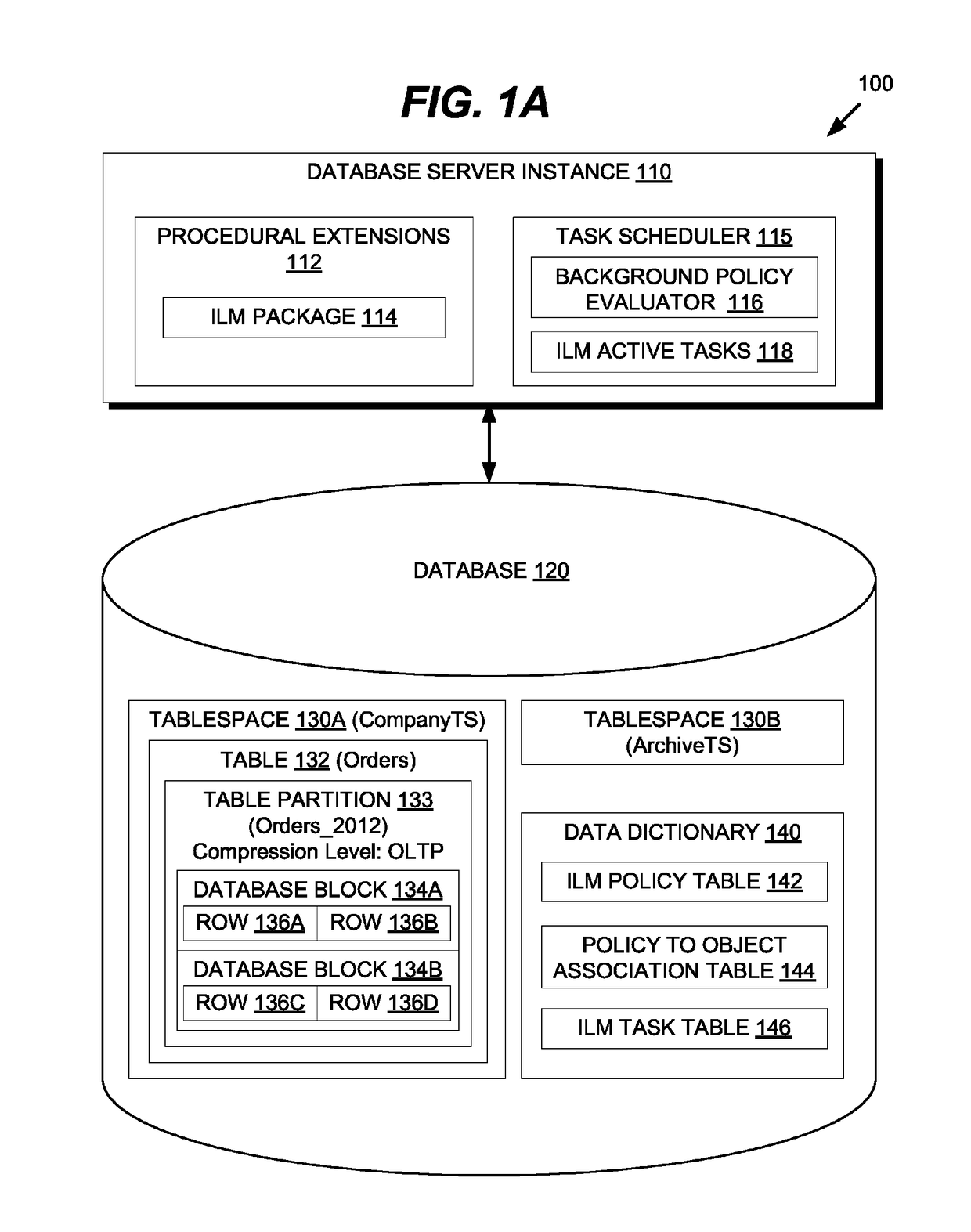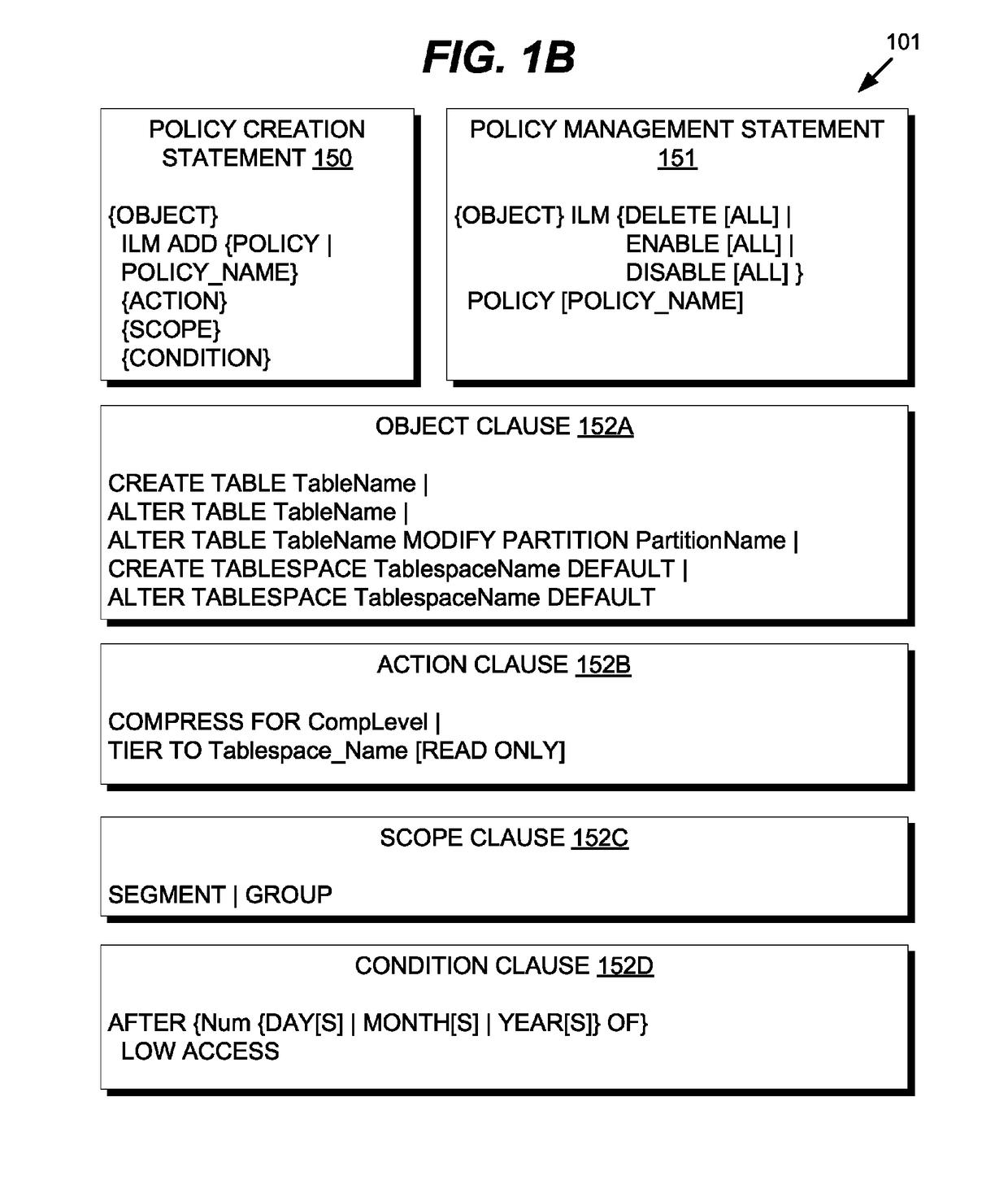Automated information lifecycle management using low access patterns
a technology of information lifecycle management and low access pattern, applied in the field of databases, can solve the problems of reducing the usefulness of most data, affecting the efficiency of data storage, and many businesses being constrained
- Summary
- Abstract
- Description
- Claims
- Application Information
AI Technical Summary
Benefits of technology
Problems solved by technology
Method used
Image
Examples
example ilm use case
[0057]To provide an example of recorded ILM policies using the syntax discussed above, FIG. 1C is a block diagram that depicts example policies for automated information lifecycle management using low access patterns in a database management system, according to an embodiment. Diagram 102 of FIG. 1C includes data dictionary 140. Data dictionary 140 includes ILM policy table 142. ILM policy table 142 includes policy 143A. With respect to FIG. 1C, like numbered elements may correspond to the same elements from FIG. 1A. While only a single policy 143A is shown for simplicity, ILM policy table 142 may include multiple policies.
Table Partition Compression Policy
[0058]ILM policy table 142 contains policy 143A to demonstrate an example ILM use case for database 120. As shown in policy 143A, the associated database object is the Orders table, or table 132. Due to policy inheritance, the table partitions of table 132, including table partition 133 are also associated with policy 143A in poli...
PUM
 Login to View More
Login to View More Abstract
Description
Claims
Application Information
 Login to View More
Login to View More - R&D
- Intellectual Property
- Life Sciences
- Materials
- Tech Scout
- Unparalleled Data Quality
- Higher Quality Content
- 60% Fewer Hallucinations
Browse by: Latest US Patents, China's latest patents, Technical Efficacy Thesaurus, Application Domain, Technology Topic, Popular Technical Reports.
© 2025 PatSnap. All rights reserved.Legal|Privacy policy|Modern Slavery Act Transparency Statement|Sitemap|About US| Contact US: help@patsnap.com



